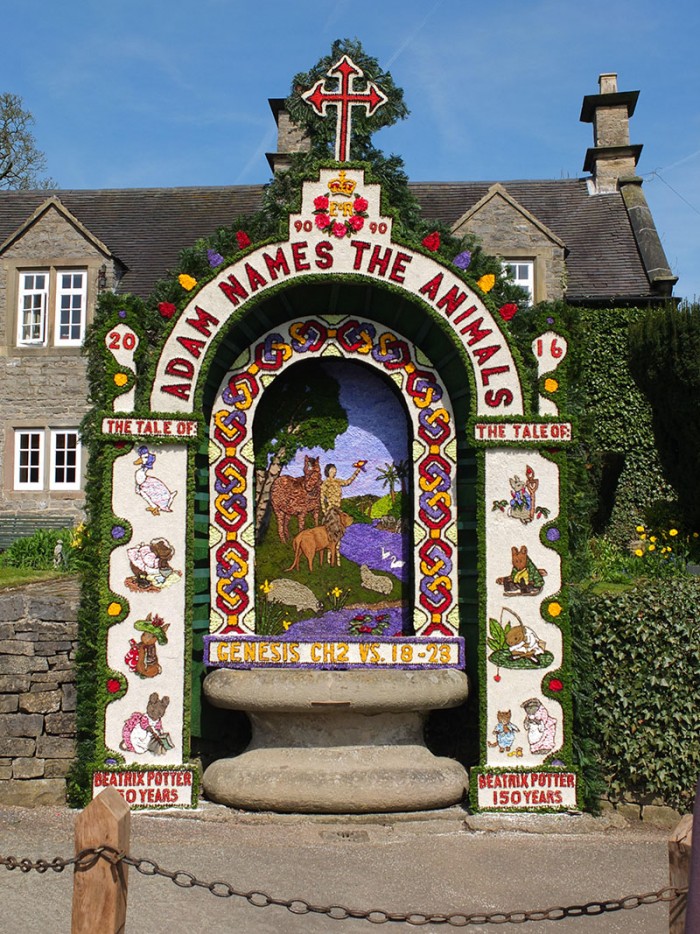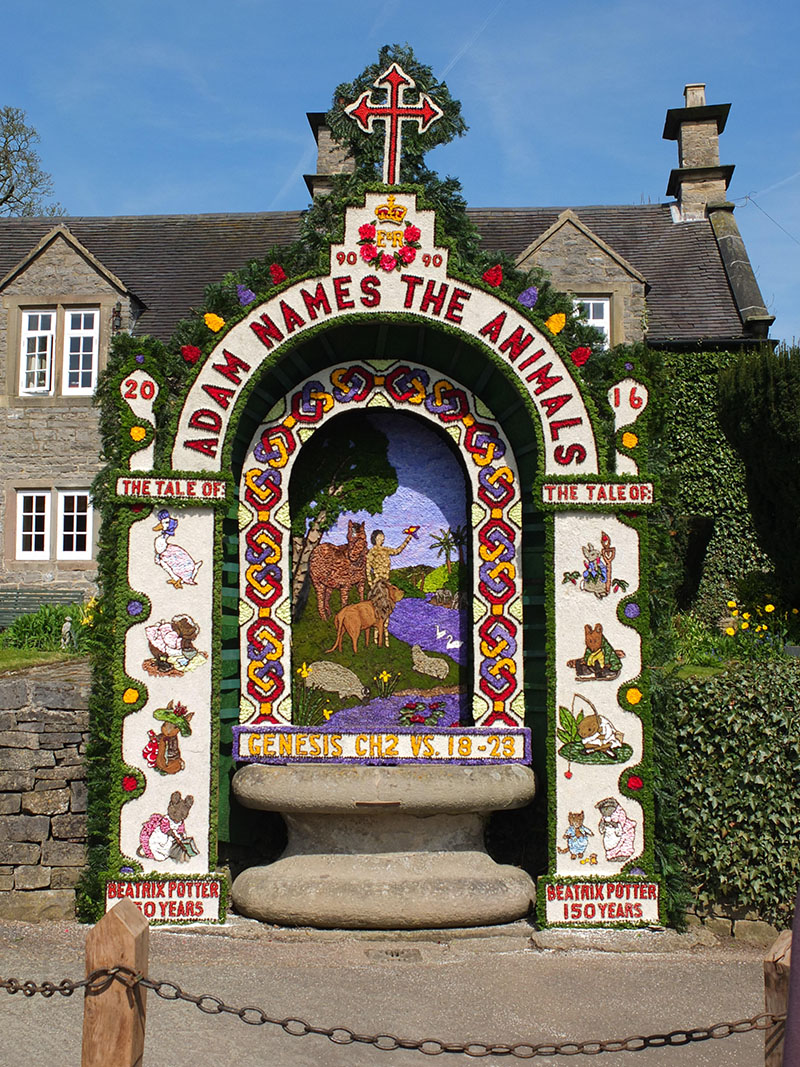The mysterious art of well dressing


Chesterfield caused uproar with its handmade tribute to the late Diana, Princess of Wales, but what is “well dressing”? And how did it all begin?
Folk art is a fantastic barometer for a culture, a means of expression that develops outside of a country’s mainstream institutions and yet reveals much about contemporary interests and tastes. Often decorative, naïve and created in isolation by self-taught artists and artisans, works of folk art often tell us much about people’s own sense of identity.
In Britain, folk art has taken many and varied forms, from hand-carved sculptures and ornate quilts, to the gluttonous characters on 18th-century Toby Jugs. One of the more popular and seasonal examples, however, is the ancient custom of well dressing.
Every year between May and September, local communities in rural villages decorate their natural springs. A large board is erected adjacent to the well and decorated with a different design each year, often commemorating religious stories or key anniversaries – recent themes have included HM The Queen’s 90th birthday and the 150th anniversary of children’s author Beatrix Potter. And in 2017, Chesterfield’s tribute to Diana, Princess of Wales caused something of a scandal.

The custom almost exclusively takes place in England’s Peak District, centring on the county of Derbyshire and extending into villages in East Staffordshire and South Yorkshire too. The unspoilt village of Tissington near Ashbourne in Derbyshire prides itself on being the first dressing in the calendar, usually beginning celebrations on Ascension Day, the 40th day of Easter. Despite only having a population of around 110 people, Tissington has six wells and a fine Jacobean manor house that is open to the public.
Each dressing consists of a wooden board with a thick frame, often cut into a shape similar to an altarpiece. Several centimetres of thick, wet clay is laid across the board and the proposed design is then often sketched out in a series of pricks made into the wet surface. A natural collage is created by pressing into the clay a variety of objects, including flower petals, twigs, wool, coffee beans, coloured papers, and more. A single board can take more than a week to create, even with the help of dozens of locals. The clay must be kept damp throughout, in order that the objects adhere to the surface.
Once the dressing is erected, the well is usually blessed by the local vicar in a short ceremony and, in the case of larger villages with multiple wells, a procession takes place between the sites. The celebrations can often last for a whole week, with carnivals, fairs and brass bands all featuring.
Like many such ancient traditions, the origins of the celebrations are about as clear as the view to the bottom of each well. The most popular theory is that the dressing ceremonies began following the Black Death, a devastating plague that spread across Eurasia, killing 1.5 million of England’s population of 4 million between 1348 and 1350. It is thought that some villages were spared fatalities because of the purity and continuity of their natural water supply. Others suggest it was a Celtic practice that was maintained only in rural areas unaffected by invaders, while some maintain the custom has pagan origins and the dressing is part of an ancient fertility ritual.
Regardless of how it began, well dressing remains one of rural England’s prettiest and most eccentric of traditions.
An edited version of this feature first appeared in issue 198 of Discover Britain



